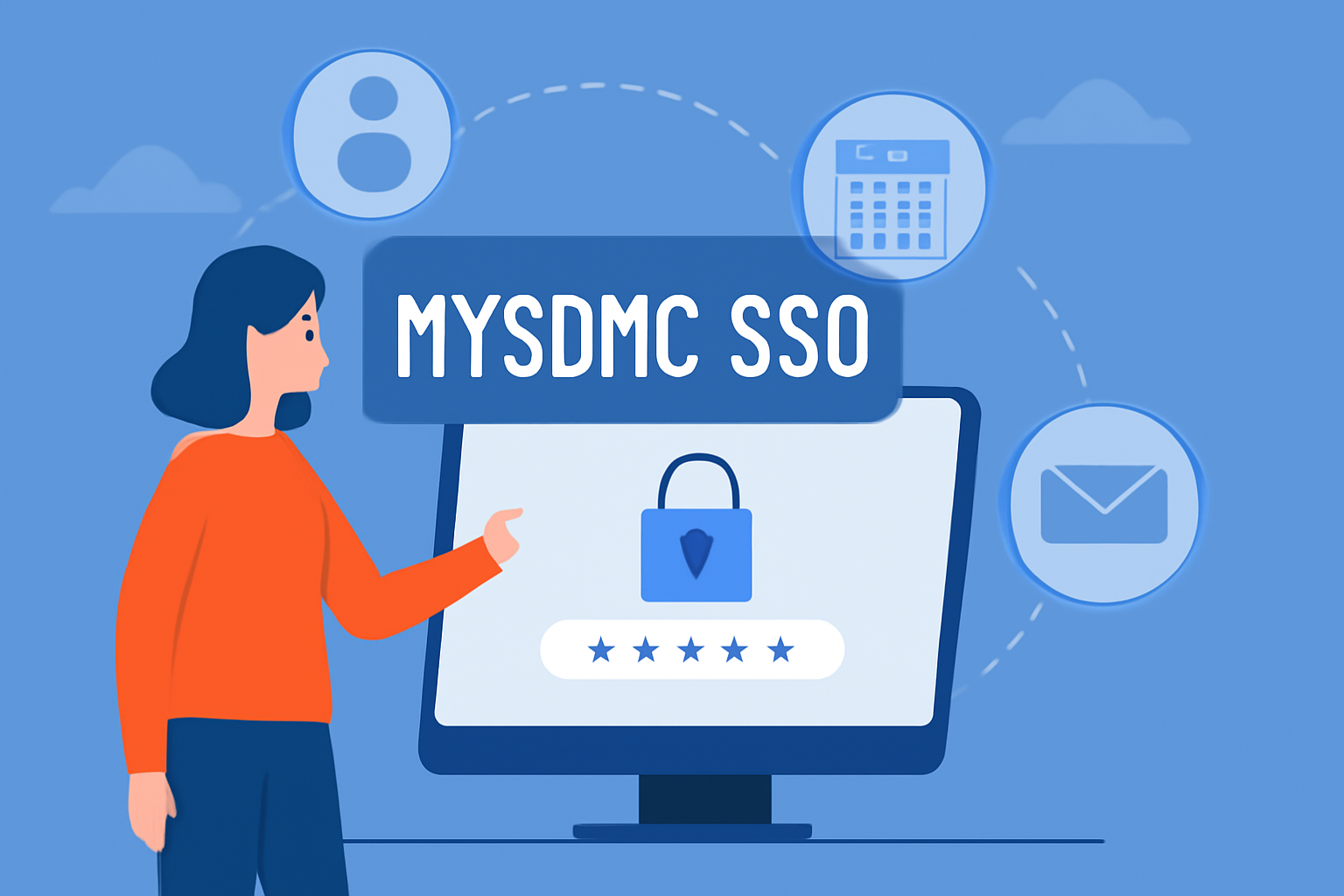In today’s digital age, accessing multiple platforms with a single set of credentials has become essential for both security and convenience. This is where MYSDMC SSO (Single Sign-On) comes into play. allows users to access various services offered by MYSDMC using just one login, making the process much more seamless and efficient.
But how does MYSDMC SSO work? Why should you consider it for your organization or educational institution? Let’s dive into the key aspects of MYSDMC SSO, including its benefits, how it works, and how to troubleshoot any common issues.
How MYSDMC SSO Works
MYSDMC SSO simplifies login across various platforms by linking multiple accounts with a single authentication. This eliminates the need for remembering multiple usernames and passwords, significantly reducing the risk of forgotten credentials. The system centralizes user access, enhancing both security and user experience.
When users attempt to log into any MYSDMC-supported application, they are prompted to enter their login credentials once. After this initial authentication, users gain access to all connected services without needing to sign in again. This centralized system is ideal for managing access across various departments, applications, and services.
Key Benefits of MYSDMC SSO
1. Simplified User Experience
MYSDMC SSO reduces login fatigue by allowing users to access multiple applications with a single set of credentials. This eliminates the need for multiple logins and provides a seamless experience for users across different platforms.
2. Enhanced Security
By using a single authentication process, MYSDMC SSO reduces the likelihood of weak or reused passwords, which are common security vulnerabilities. The centralized authentication system ensures that all accounts are protected by the same security protocols, often including multi-factor authentication (MFA) for added protection.
3. Streamlined Administration
For administrators, MYSDMC SSO offers a simpler way to manage access permissions and user accounts. When a user is added or removed from the system, their access to all connected platforms is updated simultaneously, saving time and reducing errors.
4. Reduced IT Support Needs
With fewer login issues and account-related problems, the number of support tickets related to forgotten passwords or login issues is significantly reduced. This leads to a more efficient IT department, allowing them to focus on more critical tasks.
How to Set Up MYSDMC SSO
Step 1: Access the MYSDMC Portal
To begin setting up MYSDMC SSO, users must first access the MYSDMC portal. Ensure that you have an account and necessary administrative permissions before proceeding.
Step 2: Configure SSO Settings
From the portal, go to the SSO settings section. Here, you can configure the required identity provider (IdP) details that will be used for authentication. The IdP is the system responsible for verifying the user’s identity.
Step 3: Test the Integration
Once the SSO configuration is complete, it’s essential to test the integration. Try accessing various connected applications with the new SSO credentials. If everything is set up correctly, users should be able to seamlessly switch between platforms without additional login prompts.
Step 4: Implement and Communicate Changes
After a successful setup, inform all users about the new login process. Clear communication helps prevent confusion and ensures that everyone knows how to access the various MYSDMC services through SSO.
Troubleshooting Common MYSDMC SSO Issues
While MYSDMC SSO provides numerous benefits, users might encounter occasional issues. Here are some common problems and solutions:
1. Login Failures
If users experience login failures, it’s often due to incorrect credentials or expired sessions. Check if the user’s authentication token is still valid and ensure that credentials match those in the IdP database.
2. Access Denied to Applications
When access is denied, it may be a permissions issue. Ensure that the user’s role has the correct access rights for the intended application. Administrators can adjust access permissions in the MYSDMC dashboard.
3. Account Lockout
Repeated failed login attempts can lead to account lockouts. In such cases, users should contact their administrator for assistance in resetting their access.
Conclusion
MYSDMC SSO is a powerful tool that enhances the user experience while also improving security and administration. By offering a seamless login process across various MYSDMC services, users can save time and avoid the frustration of managing multiple passwords. Administrators can also streamline their workflow, ensuring a more efficient and secure environment.
Whether you’re setting it up for the first time or troubleshooting an issue, understanding how MYSDMC SSO works will help you get the most out of this service. With the right setup and configuration, MYSDMC SSO can make accessing resources and services simpler and more secure than ever.
FAQs about
1. What is the main advantage of ?
simplifies access by allowing users to log in once and gain access to multiple applications and services without re-entering credentials.
2. Do I need special permissions to use ?
Yes, you need administrative access to configure and manage SSO settings within the MYSDMC portal.
3. Can I still use MYSDMC without enabling SSO?
Yes, but enabling SSO provides a much more efficient and secure experience for users and administrators alike.
4. How do I recover my MYSDMC account if I forget my password?
Use the password recovery tool in the MYSDMC portal or contact your administrator for assistance.
5. Can integrate with third-party applications?
Yes, can integrate with a wide range of third-party applications as long as they support SSO protocols like SAML or OAuth.












Leave a Reply